Leader of a Japanese fascist party, Ryoichi Sasakawa developed a private army to exploit Manchuria and Mongolia. Convicted of the worst crimes during World War II, he was not tried by the Allies but he was retrained by the United States for their struggle against Communism. With the support of criminal organizations, the yakusas, he took control of the ruling Liberal Party and amassed one of the biggest fortunes of the world. Converted into a benefactor of the human race, he financed a philanthropic organization that equally served to implement his political conceptions in Third World countries.
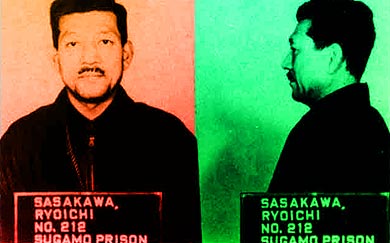
Ryoichi Sasakawa was born in 1899 in Minoo, near Osaka. He made a fortune speculating in the local rice markets. In 1927 he founded the Kokubosha (National Defense Society) and then, in 1931, the Kokusui Taihuto (Mass Party of the Patriotic Peoples), two ultra-nationalist organizations. Thus, he organized an army of 150 000 militiamen who participated in plundering operations in China, sometimes collaborating with the Kodama Kikan, a fascist organization led by his friend Yoshio Kodama. It’s all about officially controlling the production and export of strategic resources.
Thus, the «lords of the war» amassed a large fortune in Manchuria and Mongolia with the support of the imperial government. Sasakawa and Kodama, thanks to their private armies - Sasakawa even created an airborne unit with 20 airplanes and an airport in Osaka -, defrauded rich Chinese dealers and traffic in opium on their own. Sasakawa was also arrested in 1936, accused of having organized a crime syndicate in China, but he was soon released. In parallel with these mafia activities that intertwine with the activities of the Japanese diplomacy [1], Sasakawa tried to strengthen his influence in the Japanese political circles. In 1939, in an effort to consolidate the alliance between Italy and Japan, he met with Mussolini whom he enthusiastically described as the “perfect fascist and dictator”. Being an admirer of the “Duce”, he had his militias march in black uniforms. In 1942 he was elected as a member of the Diet, the Japanese parliament. Its program, ultra-nationalist and militarist, served the economic interests of the “lords of the war”, and basically demanded the intensification of military operations in South-Eastern Asia.
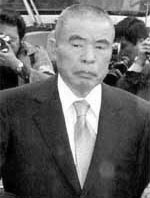
At the end of the world war, the “lords of the war” were imprisoned with the other “Class A” inmates of the Sugamo prison. Kodama and Sasakawa would often visit Nobusuke Kishi, future key man of the Liberal Democratic Party [2], and Shiro Ishii, who directed the experiments of Camp 731 [3]. The Liberal Democratic Party was indeed a single organization that ruled Japan since their defeat with Washington’s approval. The American secret services, in a 1946 report, described the two fascists in the following manner: «Kodama’s long involvement in ultra-nationalist activities, sometimes of a violent nature, and his ability to unite the youth around him make him a man that will probably represent a bigger threat to security. Sasakawa is a potential threat for the future of Japan (...). He is a rich man who has no scruples as to the use of his fortune (...). He can change sides to take advantage of any opportunity» [4]. The CIA provides them with this opportunity by letting him become a combatant of the Cold War.
A Yakusa Godfather and Combatant of the Cold War
Ultranationalists Sasakawa and Kodama were solid bastions for the reconstruction of Japan that would become in the Asian showcase of market economy. General Willoughby, in charge of the American secret services, recruited henchmen at the Sugamo prison.
Kodama had vast experience in espionage: his activities in Manchuria were not limited to plundering but he also organized an efficient espionage service that passed important information to the imperial army. Sasakawa, for his part, heads a private army made up of experienced soldiers among whom the US secret services wouldl recruit informers, strikebreakers and “secret agents”. The ex-war criminal, who regarded his stay in Sugamo as «a vacation offered by the good God», was released in 1948 along with his comrades Shiro Ishii and Yoshio Kodama. In exchange, the “Class A” criminals put their political, military and mafia networks at the service of the struggle against communism conducted by the United States in Japan and in South East Asia.
Ryoichi Sasakawa, whose nickname was Korumaku (the shadow man) then became a decisive element in the reconstruction of Japan. Along with his friend Kodama, he financed the Liberal Democratic Party. On various occasions he influenced the election of the Prime Minister (he supported Sato in 1964 and Kakuei Tanaka in 1972). His political contacts allowed him to increase his fortune. Thus, in 1959, thanks to his former Sugamo comrade Nobusuke Kishi [5], he was appointed president of the Federation of Boat Races Organizers that was accountable to the Ministry of Transportation.
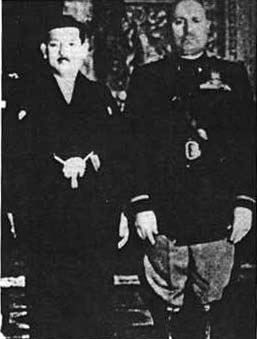
In 1994, the Federation declared a volume of businesses two billion yens, of which 3.2% completely depended on Sasakawa [6]. In parallel with his official activities, Sasakawa continued his career as an ultranationalist yakusa. In 1954 he joined the Butoku kai (Association of Martial Vitues), a militarist and fascist pressure group that included several “Class As”, especially the former director of the Mitsubishi, and important munitions manufacturing company and Prime Minister Yoshida Shigeru. Likewise, he supported anti-communist organizations like Nihon goyu renmei, a group of World War II veterans, and the Zen-ai kaigi federation.
The Korumaku broke strikes and harassed political opponents thanks to his militias whose existence never became of public knowledge. Sasakawa claimed to be the leader of an eight-million men army. He headed numerous associations that served as a cover for his mafia activities. His karate and saber dance clubs included more than 3,500 000 members he similarly headed groups that were openly fascist like the International Federation for Victory over Communism (IFFVOC) that declared 160,000 members. This army turned Sasakawa into one of the most respected yakusas in Japan. He and his friend Kodama controlled the mafia world and solved conflicts among rival gangs [7].
On the other hand, in 1963 Sasakawa became the main advisor of Reverend Sun Myung Moon. He encouraged the expansion of the Church of the Unification (Moon sect) [8]. With Moon and Chang Kai Chek he founded the World Anti-Communist League (WALC), a result of the merger between the Anti-Communist League of the Asian Peoples (APALC) and the Anti-Bolshevik Nations Bloc (ABN). The organization, that brought together the extremist factions of the Taiwanese, South Korean and American secret services, was behind military interventions in South America and Asia [9]. Sasakawa facilitated the coup d’état against Indonesian leader Sukarno and supported Philippine dictator Marcos through a mutual assistance association [10].
Philanthropy according to Sasakawa
The political leverage of Ryoichi Sasakawa, combined with his mafia activities, allowed him to build a huge empire with the consent of the US authorities. Thus, he immersed himself in a philanthropic career, investing part of his fortune in a foundation, the richest before the powerful Ford Foundation. He, who was proud of being «the richest fascist of the world» never hid his desire of obtaining, like his friend Jimmy Carter, the Nobel Peace Prize, but he had to content himself with the Helen Keller International Award, the Linus Pauling for Humanitarianism and the Peace medal granted by the United Nations.

Sasakawa was a benefactor of the Holy See.
Money is odorless.
The budget of the Foundation hides the dark past of its founder and attracts numerous leaders of international organizations, frequently linked with the United Nations, eager to obtain funds for their projects. The United Nations environmental award, the Sasakawa health award and the United Nations award for the prevention of catastrophes vouch for the efforts of the yakusa godfather.
In February 1978, by means of his naval construction foundation, he transfered half a million dollars to the United Nations and, in 1979, a million dollars to the United Nations Educational, Scientific and Cultural Organization (UNESCO), thus becoming the most important sponsor of the UN institutions. However, this generosity had another face. The Sasakawa clan, Ryoichi and his three sons) tried to control the organizations that receive their donations.
In 1999, when the election of an Egyptian lawyer ahead of UNESCO seemed definite, African representatives voted against their candidate and guaranteed the election of Japanese diplomat Matsuura. All the indications were that the Sasakawa Foundation promised «donations» in exchange for the votes of the African delegates. In 1993 and 1996, two internal reports of the United Nations already demonstrated the irregularities in the election of another Japanese man with few scruples, Hiroshi Nakajima [11], at the head of the World Health Organization (WHO) [12].
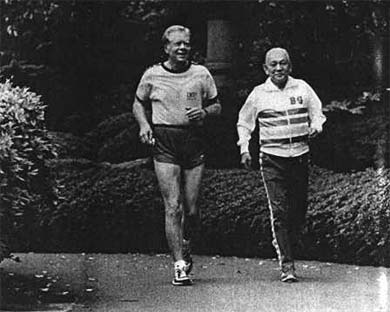
Once more, the Sasakawa clan was accused of organizing corruption. Nakajima, in recognition, erected a statue of his benefactor Sasakawa in the lobby of the WHO in Geneva. The powerful Japanese foundation, main private donor of the WHO, knew how to become indispensable: in 1996 it deposited 10 million dollars for a program to fight leprosy [13].
The Sasakawa Foundation similarly co-sponsored, along with the Jimmy Carter Foundation, the “Sasakawa-Global 2000”, a farming program directed to ten African countries [14]. A close friendship between the former US president and the Japanese godfather was the origin of this philanthropic collaboration. In France, an «affiliate» of the Foundation was declared a public entity in 1990. It financed the Institute of East Asia of Lyon [15], the festival of Aix in Provence, the Guimet museum, concerts of the Chatelet Theater and activities linked to the National Center for Scientific Research (CNRS).
Who protects Alberto Fujimori?
Recently, the Sasakawa Foundation was involved in the forced sterilization of 300,000 Peruvian women [16]. Former President Alberto Fujimori is currently living in Japan as a refugee while Peruvian authorities make unsuccessful efforts to have him extradited so that they can try him for “crimes against humanity”. Alberto Fujimori is accused of having organized the Colina Group, a death squadron responsible for the elimination of members of the Maoist guerrilla Sendero Luminoso (Shining Path) [17].
The Peruvian deputies also suspect that he may have planned the sterilization of indigenous women. Between 1995 and 2000, according to a report of a Congress commission, 331,600 women were sterilized and 25,590 men had vasectomies. This campaign, aiming at pacifying indigenous opposition groups and pleasing the IMF, that includes demographic control demands among its criteria [18], was mainly financed by the United States Agency for International Development (USAID) and by the United Nations Population Fund (UNFPA).
The Nippon Zaidan, one of the annexed organizations of the Sasakawa Foundation, also gave funds for this vast operation of Malthusian inspiration. Its president, Ayako Sono, is the main supporter of Alberto Fujimori, who obtained the Japanese citizenship to avoid the Peruvian justice. There is every indication that the Sasakawa Foundation has solid relations in the heart of the Japanese government and actively participates in “secret” operations in Latin America.

Ryoichi Sasakawa died in 1995 without the so much coveted Nobel Peace Prize. His three sons replaced him at the powerful Sasakawa Foundation and continued his businesses with the same networks and practices of their father. Yohei is the president of the Foundation [19]: he chairs the administrative council of the French subsidiary and he has met on several occasions with the friend of the family Jimmy Carter. Takashi has relations with the underworld and he has tried to buy the Shelburne Hotel Casino of Atlantic City so as to introduce himself into gambling in the United States [20].
The Sasakawa Foundation, too “generous” to be threatened, still covers mafia activities and diplomatic operations with unmentionable objectives.
The Monument in honor of Ryoichi Sasakawa at the headquarters of the World Health Organization (WHO)


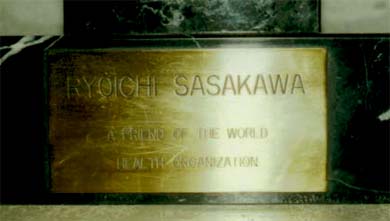
Inside the headquarters of the World Health Organization (WHO), there is a small monument dedicated to the memory of Ryoichi Sasakawa, a Japanese war criminal during World War II. In the picture, a security guard of the organization kindly poses next to the statue of Sasakawa. The plaque reads: «A friend of the World Health Organization».
[1] Contrary to the thesis of American historiography*, World War II did not last from 1941 to 1945, nor from 1939 until 1945, as European historiography presents it, but from 1931 until August 17, 1945. It did not begin in Europe with the invasion of Poland by the troops of Adolf Hitler’s Reich in September 1939, but in the Asian border. In 1931, Japan invades the Chinese province of Manchuria. China was until then regarded as a property of the big European colonial powers, namely Great Britain, France and the Soviet Union. The capture of Shanghai by the imperial army in 1937 and the alliance of Tokyo with the Fascist Italy and the Nazi Germany in 1936-1937, gave Japan a place among the forces of the Axis. This participation was confirmed by the Japanese attack against the American naval base of Pearl Harbor in December 1941. The war would end with the unconditional surrender of Japan.
(*) Historiography: Bibliographic and critical study of writings about history and their sources and also of the authors who have dealt with these matters. Art of writing history. Spanish Language Dictionary of the Royal Academy.
[2] Nobusuke Kishi became Prime Minister in 1957 thanks to the support of Yoshio Kodama and Ryoichi Sasakawa.
[3] The regiment 731 of the Japanese imperial army settled in the Chinese city of Harbin in 1931. The prisoners’ camp of Harbin served as a laboratory for experimentation on human beings. Japanese scientists used Chinese prisoners and, from 1942 on, they also used American and Soviet prisoners in experiments trying to determine if human resistance to certain mortal diseases had to do with the “race” of the ill ones. Three thousand human beings were used as guinea pigs and had horrible deaths caused by typhus, the bubonic plague, cholera and syphilis in the experiments of the Japanese Mengel whose real name was ShiroIshii. When the Soviet Red Army freed Harbin, the last surviving “laboratory human beings” were gassed and the Japanese tried to erase any evidence of such experiments in the Camp 731. Shiro Ishii returned to Japan. The American secret services offered him his freedom in exchange for the results of his experiments in Harbin. Shiro Ishii peacefully dies in 1959 and he was never bothered for his past.
[4] Scott Anderson, Jon Lee Anderson: «Inside the League, The schocking exposé of how terrorists, nazis and latin american death squads have infiltred the World anti-communist league», Dodd, Mead and Company publishing house, New York, 1986.
[5] Ibid, p. 63.
[6] Philippe Pons, «Japon, La richissime fondation Sasakawa est mise en cause par le Parlement», Le Monde daily, Wednesday, June 15, 1994.
[7] Fabrizio Calvi, Olivier Schmidt: «Intelligences secrètes, Annales de l’espionnage»,(Secret Intelligence, espionage records) Hachette, France, 1988, p. 261-262.
[8] See : «Révérend Moon, le retour», text in French, Voltaire, March 26, 2001.
[9] See: «La Liga Anticomunista Mundial, internacional del crimen», (The World Anti-Communist League, international of crime) Red Voltaire, January 20, 2005.
[10] Jeffrey M. Bale, “Privatising covert action: the case of the Unification church”, Lobster, May, 1991.
[11] Following his election as director of the WHO, Dr. Nakajima is caught in the Russian border in posesión of stolen icons, and he is accused of trafficking works of arts.
[12] Thierry Meyssan, «Le bon docteur Nakajima», Exit le journal, February 12, 1994, and Serge Garde, «L’odeur du Yen», L’Humanité, Tuesday October 8, 2002.
[13] «Organisation mondiale de la santé, scandales et gabegie», (World Health Organization, scandals and deception) Le Point French magazine, No.1334, April 11, 1998
[14] Serge Garde, «Un parfum de corruption» (A scent of corruption), L’Humanité French daily, Tuesday, October 14, 2003.
[15] In March 2002, a researcher of the National Center for Scientific Research (CNRS), Philippe Pelletier, quit alter denouncing the financing of the institution by the Sasakawa Foundation, an action to which French authorities reacted with indifference. The director of the French subsidiary, Tominaga, affirmed he was not aware of the activities of Ryoichi Sasakawa. Cf. Serge Garde, «L’odeur du Yen», op.cit.
[16] Serge Garde, «Pérou, imposture du programme de contrôle des naissances, 300.000 femmes stérilisées en quatre ans», (Peru, imposture of the birth control program, 300,000 women sterilized in four years) L’Humanité French daily, Tuesday, December 3, 2002.
[17] See: “The mafias counterattack”, by Herbert Mijica Rojas, Red Voltaire/IPI, January 3rd, 2003.
[18] Françoise Barthélémy, «Une politique d’État froidement élaborée, Stérilisation forcée des indiennes du Pérou» (A coldly elaborated State policy, the forced sterilization of indigenous women in Peru), Le Monde diplomatique, French monthly magazine, May 2004.
[19] In 1994, the Mainichi daily Publisher a list of 100 retired government employees who received money (7 300 million yens annually) from the Sasakawa Foundation.
[20] Fabrizio Calvi, Olivier Schmidt, Intelligences secrètes, op. cit., p. 262.
 Articles by this author
Articles by this author





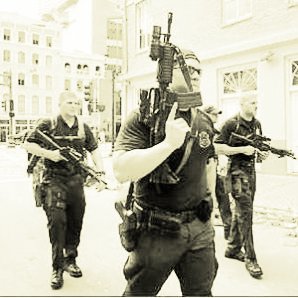











Stay In Touch
Follow us on social networks
Subscribe to weekly newsletter